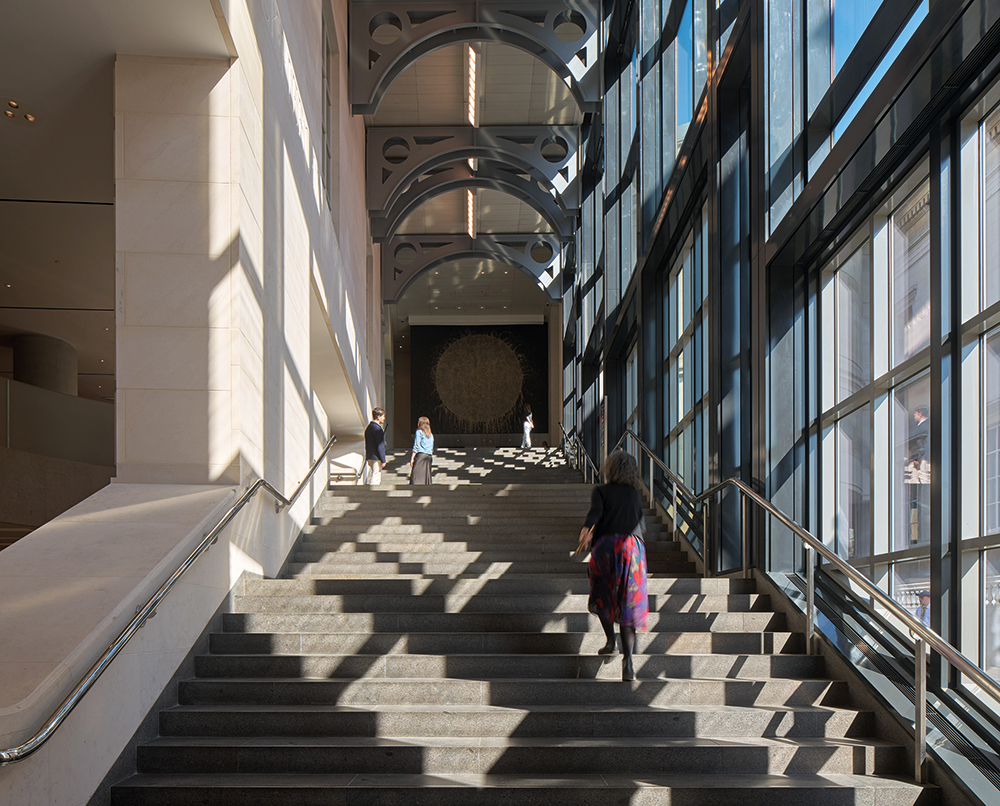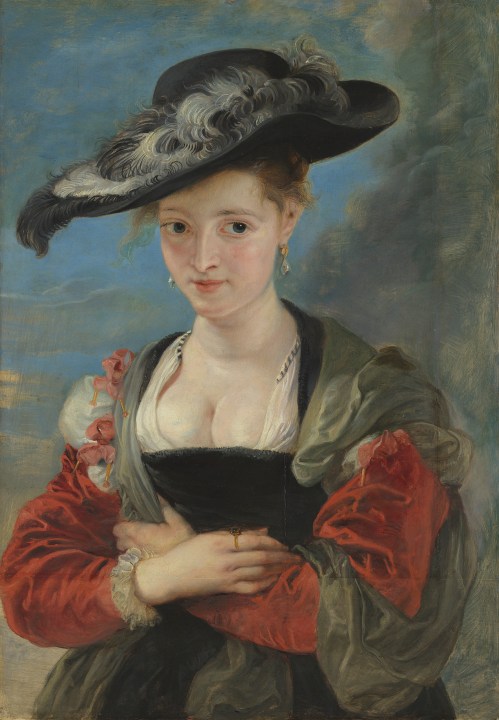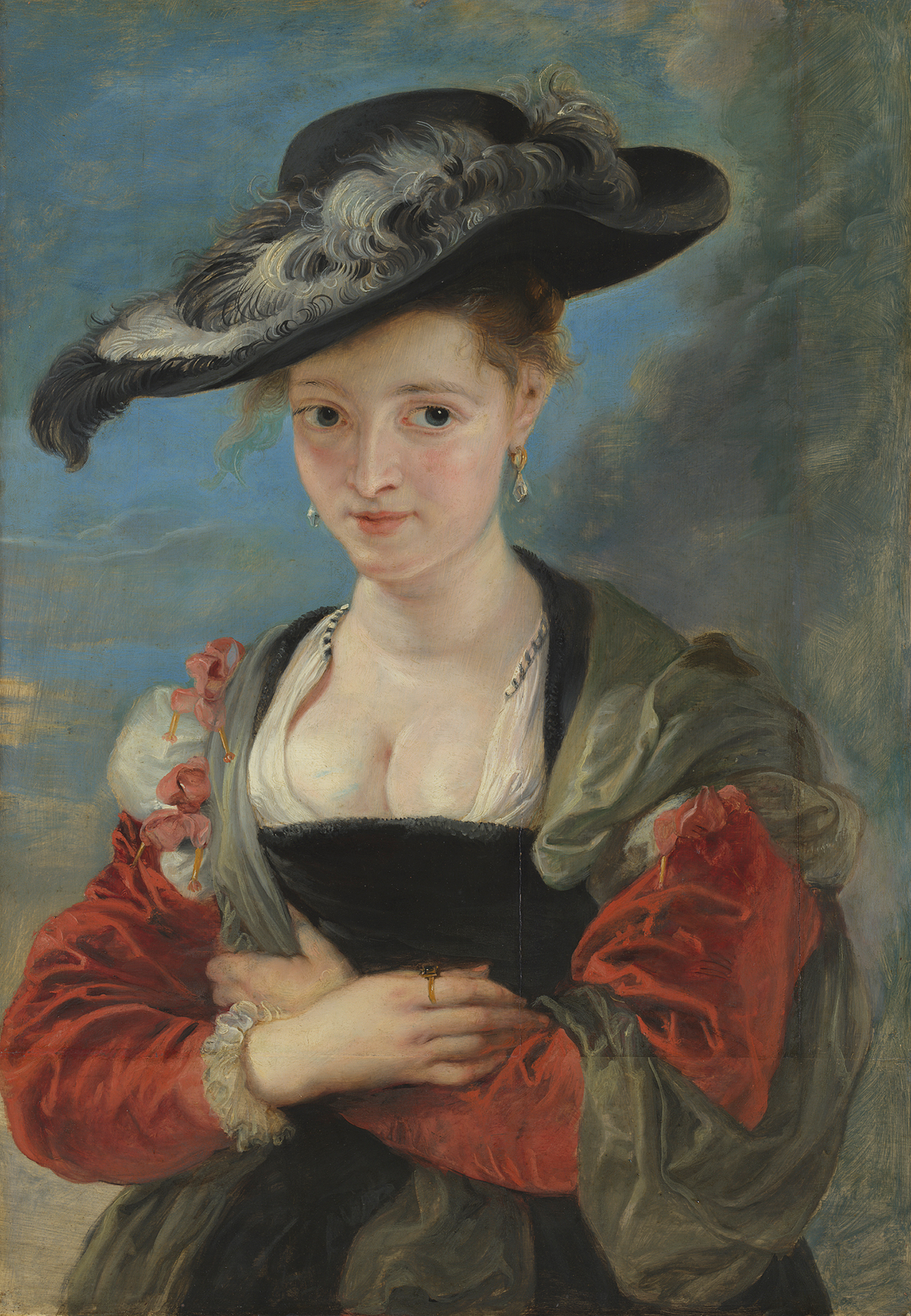
A little under a year ago, it emerged that builders working on the redevelopment of the National Gallery’s Sainsbury Wing had discovered an unusual time capsule embedded in a pillar they had been instructed to knock down. It contained a letter signed by Sir John Sainsbury, who, along with his brothers, had thrown the museum a £50 million lifeline to realise the extension in 1990; and clearly, he wasn’t happy with the way his money was being spent.
He expressed this with no small amount of elegance: ‘If you have found this note,’ his missive read, ‘you must be engaged in demolishing one of the false columns that have been placed in the foyer of the Sainsbury Wing of the National Gallery. I believe that the false columns are a mistake of the architect and that we would live to regret our accepting this detail of his design. Let it be known that one of the donors of this building is absolutely delighted that your generation has decided to dispense with the unnecessary columns.’
Many visitors in the decades since might be inclined to go further. The Sainsbury Wing’s architects, the iconoclastic American husband-and-wife partnership Robert Venturi and Denise Scott Brown, were a pair of brilliant minds who, it’s generally acknowledged, invented architectural postmodernism. Their gleeful fusion of historical styles and registers resulted in some weird and wonderful buildings, and some great soundbites. I remember reading, for example, that they had provoked each other into a creative mode with the phrase: ‘I bet you I can like something worse than you can like.’ What they did like, or at least professed to, was Las Vegas.
It’s perhaps unsurprising, then, that their contribution to the National Gallery was such a dud. To be clear, the actual galleries housed in the extension are good display spaces which, via a footbridge, form a sensitive continuum from the main building. The exterior, however, is a po-mo genre-mash too far, melding neoclassical pastiche with the aesthetic values of an Atlantic Wall bunker. Worse entirely was the building’s foyer, a claustrophobic, confusing maze of a space made all the grimmer by dint of the tinted windows running down its walls, which plunged the gallery-goer into stygian gloom on even the brightest of days.
Several years ago, the gallery finally got around to doing something to address this. To these ends, they hired Annabelle Selldorf, a New York-based German whose house style could be described as ‘quiet luxury’ on an institutional scale. It’s fair to say that she is the art world’s current favourite architect, and those of us who pay attention can clock her imprint on projects from Manhattan to Venice to Arles. She specialises in light-filled, airy interiors, all swooping curves, dairy-product colours and soft lighting; nothing showy, no hard edges – the antithesis of Herzog & de Meuron’s sharp, pseudo-industrial theatricality, which for so long seemingly hypnotised the museum sector. It’s unexciting but inoffensive, which seems an acceptable formula when it comes to public buildings. And, on occasion, it can be pretty good.

Selldorf has done a decent job here: if the foyer looks uncannily similar to her other developments – with a touch of the hotel lobby about it – few would say it wasn’t an improvement. She didn’t have much to work with – quite inexplicably, the Sainsbury Wing now has Grade I-listed status. Expecting a remodel with the wow factor of the recent National Portrait Gallery renovation would be unreasonable, but her efforts are unobjectionable: she’s knocked down the two pillars Sainsbury so detested, got rid of the adjacent bookshop and installed clear glass on the windows. Plus, the route to the toilet is no longer a cryptic crossword clue. Indeed, the only reasonable criticism I heard when I went for the press visit came from an art historian incensed by the fact that the urinals in the gents’ had been replaced by a row of stalls.
The really big hits are sprinkled throughout – it makes you realise quite how many of them there are
The priority of the brief – the whole point, in fact – was to create an entrance fit for purpose. The National Gallery hadn’t prepared for the visitor numbers of recent years, and the queues had got out of hand. Selldorf and her team have thus done away with the troublesome revolving door and installed a hi-tech security system invisible to all but the nerdiest of visitors. Yes, this does mean that our greatest art gallery has just spent £85 million of privately raised capital on what is essentially a state-of-the-art door, but wow does it work. I went back to the museum for the public opening, and while it was utterly rammed, I didn’t have to wait in line for a second. Whether or not it was worth it, you’d have to ask the donors, but it does mean that even the most impatient among us no longer have cause to neglect the best bits of our national collection.
Speaking of which, the museum has also exploited the occasion to exercise a comprehensive rehang. Its title – ‘The Wonders of Art’ – might sound off-putting, but the result is ravishing. The previous arrangement of its permanent collection was almost as baggy as that of the Louvre, with a fraction of the space and many fewer tourist-magnets. And because – by European standards – it’s a relatively small national museum, you could easily get the impression its holdings were somewhat lacking. They aren’t.
This is not an endeavour along the lines of Tate Britain’s much-derided recent rehang, which attempted to reorder its collection into a scheme that suited the present day’s interpretation of this country’s social and imperial history. Indeed, it seems the National Gallery’s curators have strived to do precisely the opposite, reordering its greatest hits into a vaguely chronological display that largely ignores categorisation and instead attempts to create a more readable history of European art, from the end of the Middle Ages to the eve of the first world war.
Early Renaissance Flemish and Italian painters, belonging to traditions we often assume to be distinct, are occasionally mixed together in the Sainsbury wing, teasing out parallels that seem self-evident once you see them side by side. Piero della Francesca gets a room to himself, as do Titian, Rembrandt and Monet in the main building. The really big hits – Botticelli’s ‘Venus and Mars’, Velazquez’s ‘Rokeby Venus’, Manet’s fragmented vision of Emperor Maximilian’s execution – are sprinkled throughout as if obeying a rhythm. It makes you realise quite how many of them there really are.
You also grasp that a serious school of British painting probably wouldn’t have emerged were it not for the Dutch. As you might remember, they successfully invaded us, brought their rather more intellectual values with them and thence created havoc in Ireland. They also imported an artistic mode that reflected Protestant virtues with a succinctness that nobody here had come close to articulating. William III was a pivotal figure in English, Irish and Scottish history and, I think, in painterly fashions, too.
The British galleries are as spellbinding as anything. Curiously, however, I pretty much had them to myself when I went back, and was even more surprised to find the Northern Renaissance galleries deserted, which gave me an opportunity for a proper, up-close, revelatory look at Van Eyck’s ‘Arnolfini Portrait’. I’d never, for instance, paid attention to the sliver of window beneath the blinds at the left-hand edge of the picture and the glimpse of greenery it gives us. It could be a scene from a present-day fashion atelier in Ghent, Signor Arnolfini’s Jamiroquai hat, statement dog and all. There are so many such encounters here that it demands real willpower to drag yourself back out through the exit. In honesty, I’d forgotten how exciting a collection we have – and freely accessible unlike the Louvre, the Prado or the Met. The new-look National Gallery is a place that invites you to lose yourself in its depths. It would be both rude and stupid to refuse.
The National Gallery is open daily from 10 a.m. to 6 p.m., and from 10 a.m to 9 p.m. on Fridays.








Comments